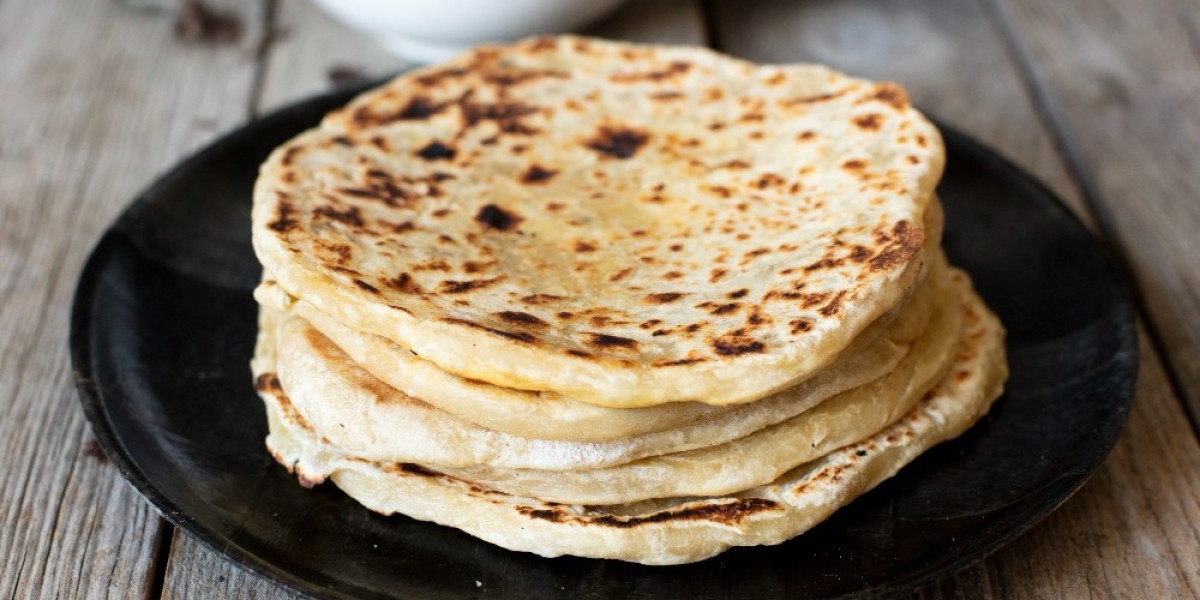Introduction
For thousands of years, bread has been an essential part of human society. Its diverse forms, flavours, and textures have evolved, reflecting the unique culinary traditions of different regions. In this blog post, we will delve into the world of two popular flatbreads: tortilla bread and Arabic bread. While both are widely consumed and share some similarities, they possess distinct characteristics that set them apart.
Tortilla Bread: A Mexican Staple
Tortilla bread, a quintessential ingredient in Mexican cuisine, is primarily made from corn or wheat flour. The dough is rolled out thin and cooked on a griddle or comal until it becomes soft and pliable. Tortillas are incredibly versatile and can be enjoyed in a variety of ways. They can be eaten plain, filled with meat, beans, cheese, or vegetables, or used to make tacos, burritos, enchiladas, and quesadillas.
One of the key characteristics of tortilla bread is its neutral flavour. This allows it to complement a wide range of fillings without overpowering them. Additionally, tortillas are relatively easy to make at home, making them a popular choice for both home cooks and professional chefs.
Arabic Bread: A Cultural Icon
Arabic bread, also known as pita bread, is a leavened flatbread that originated in the Middle East.Usually, wheat flour, water, yeast, and salt are used to make it. The dough is rolled out thin, shaped into rounds, and baked in a hot oven. As the bread bakes, steam pockets form within the dough, causing it to puff up and create a distinctive airy texture.
Arabic bread is a staple food in many Middle Eastern and North African countries. It is often served alongside meals as a vehicle for dipping into hummus, baba ghanoush, and other dips. It can also be used to make sandwiches, wraps, and pizzas.
Key Differences Between Tortilla Bread and Arabic Bread
While both tortilla bread and Arabic bread are flatbreads, they differ in several key aspects:
- Ingredients: Tortilla bread is primarily made from corn or wheat flour, while Arabic bread is typically made from wheat flour, water, yeast, and salt.
- Texture: Arabic bread is typically airy, chewy, and crispy on the outside, whereas tortilla bread is typically soft and flexible.
- Flavour: Tortilla bread has a neutral flavour, while Arabic bread can have a slightly tangy or nutty flavour due to the fermentation process.
- Cooking Method: Tortilla bread is cooked on a griddle or comal, while Arabic bread is baked in a hot oven.
- Culinary Usage: Tortilla bread is a staple in Mexican cuisine and is often used to make tacos, burritos, enchiladas, and quesadillas. Arabic bread is a staple in Middle Eastern and North African cuisine and is often served alongside meals as a vehicle for dipping or used to make sandwiches, wraps, and pizzas.
The Art of Pairing: Tortilla Bread and Arabic Bread with Different Cuisines
Both tortilla bread and Arabic bread can be incorporated into a variety of cuisines, offering endless possibilities for culinary creativity. Here are a few ideas:
- Mexican Fusion: Combine the bold flavours of Mexican cuisine with the versatility of tortilla bread. Experiment with different fillings, such as grilled carne asada, spicy shrimp, or roasted vegetables.
- Mediterranean Magic: Pair Arabic bread with the vibrant flavours of Mediterranean cuisine. Create delicious mezze platters with hummus, Baba ghanoush, and dolma, or use the bread to make shawarma wraps.
- Indian Inspiration: Infuse Indian flavours into tortilla bread by filling it with spicy curries, tandoori chicken, or vegetable korma.
- Asian Adventure: Explore the fusion of Asian and Middle Eastern flavours by using Arabic bread to make sushi rolls or wraps filled with teriyaki chicken, stir-fried vegetables, or spicy noodles.
Conclusion
Tortilla bread and Arabic bread, while distinct in their own right, offer a world of culinary possibilities. By understanding their unique characteristics and culinary applications, we can elevate our cooking and dining experiences. Whether you prefer the soft and pliable texture of a tortilla or the airy and chewy nature of Arabic bread, there is a flatbread out there to satisfy your taste buds. So, the next time you're planning a meal, consider incorporating these versatile breads into your culinary repertoire.



